Cinematographer Ward Russell has worked in the industry for over 30yrs. His collaborations with director Tony Scott on films such as ‘Days of Thunder’ and ‘The Last Boy Scout’ have produced some of the most iconic images from that era. Today Mr. Russell resides in Santa Fe, New Mexico where he continues to express his artistic side through still photography.
Jason: Did you always aspire to become a Director of Photography?
Ward Russell: Actually, I aspired to be a theatrical lighting designer. I went to college and received a degree in theater in scenic designer. It was my interest in lighting that eventually led me into films…and the fact that you can’t make any money in theater.
J: How did you develop your visual style?
WR: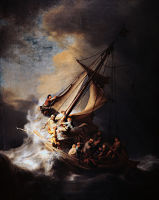 I spent a lot of time in art galleries looking at paintings from the Baroque period. I was very enthralled by their use of lighting in the 1600’s. It was the most dramatic form of lighting I could find at the time and I believe my lighting style evolved from that.
I spent a lot of time in art galleries looking at paintings from the Baroque period. I was very enthralled by their use of lighting in the 1600’s. It was the most dramatic form of lighting I could find at the time and I believe my lighting style evolved from that.
J: Is knowledge of the Fine Arts instrumental from a cinematographer’s standpoint?
WR: It’s extremely helpful if you plan on being a cinematographer. Fine art is in every aspect of making pictures from wardrobe and costume design to make-up and special effects. Everybody must know what they are doing in order to make things look good. Art Directors and Directors especially so.
J: Having a background in theater design, how did you ‘break’ into the film industry?
WR: I made the transition through the lighting department. I had been doing lighting for the stage in San Francisco for Act and the Opera Co. When I moved to LA, I met a film gaffer whom I questioned a lot about the differences between stage and set gaffing. You have to remember that when I went to school there were no film schools. I met a gaffer that befriended me and he recommended me to the union. A few weeks later I was working on the Universal Lot. From there it was a progression working my way through the electrical department. First as a best boy then gaffer, finally I realized that lighting was a major part of being a cinematographer. After that I sought out ways to finagle my way into the camera department.
I just sort of evolved; at the time I went in I was happy being a lighting person. I really enjoyed the use of light and as a gaffer you’re the right hand man to the Director of Photography. As the years went bye I started to understand what photography was all about and how it worked in conjunction with the lighting. My knowledge from working with cameramen, going to films and studying dallies made me feel that I knew enough to call the shots. I figured it was a better way to express my artistic side than just doing the lighting. So I did.
J: Can you tell us about working on Tim Burton’s Directorial debut?
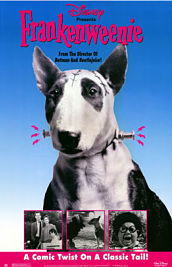 WR: I was on Tim Burton’s very first film as a director. At the time he was an animator under contract for Disney. Somehow he managed to convince them that they should make this 30min short film of his titled ‘Frankenweenie’. So they gave him $1.5 million dollars and told him to go make it. I just remember this gang-ly, tall kid with hair flying everywhere, wandering around and creating these wonderful weird images. It was pretty spectacular; no one knew at the time where he would end up.
WR: I was on Tim Burton’s very first film as a director. At the time he was an animator under contract for Disney. Somehow he managed to convince them that they should make this 30min short film of his titled ‘Frankenweenie’. So they gave him $1.5 million dollars and told him to go make it. I just remember this gang-ly, tall kid with hair flying everywhere, wandering around and creating these wonderful weird images. It was pretty spectacular; no one knew at the time where he would end up.
J: Could you tell from that experience that Burton would have a long career as a Director?
WR: His vision was certainly unique compared to anyone else I had worked with. It was beyond animation and beyond a children’s movie, it was this quirky thing. It was obvious he had a different way of looking at things.
J: During the mid-80’s you began working with director Tony Scott on some of the biggest and most memorable films /commercials of that era. How did this working relationship come about?
WR: It was a fluke. At the time I was an electric best boy and a producer friend of mine who had worked his way up from P.A., managed to get a job working on English commercials. The production sent Tony Scott and the boys over from England and he asked me to be lead gaffer on the project. I agreed and we shot the commercial in an old McDonald’s restaurant. I met him on that and we got along really well, he liked the work that I did. He had an English D.P. with him and they were impressed with what us gaffers do in the US. In England the gaffer isn’t allowed to be as creative in designing the lighting. Here I was, on their set; I just took the ball and ran with it. They’d tell me what needed to be lit and I’d light it up ahead of time. From then on every time Tony came to the United States he would request me as his gaffer. Tony used to only work with English cameramen until he finally used Jeffrey L. Kimball. Tony told him that I’d be on as gaffer and that’s how I met Jeff L. Kimball. For the next five years the three of us worked on a series of films.
J: This culminated in your taking over Director of Photography duties on 1990’s ‘Days of Thunder’. Your first film as D.P. was a blockbuster with one of the biggest stars in the world. Were you intimated taking on such a large production?
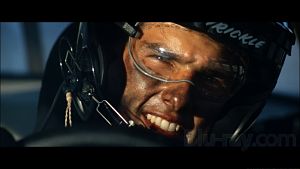 WR: I didn’t know enough to say no. Over the years Tony and I had become friends and I knew his style of working. He’s a visualist, involved in every single aspect of what the film will ‘look’ like. When ‘Days of Thunder’ came up, Jeff Kimball whom usually shot for him was off working with Adrian Lyne on ‘Jacob’s Ladder’. Tony interviewed a lot of L.A. cameramen and didn’t find one that he felt understood him and how he worked. He approached me and said; “Do you think you can do it?”. Of course I told him yes. Now I just had to get in the union. I spent the next two months finagling my way in and the rest is history, I became a D.P. and Union member.
WR: I didn’t know enough to say no. Over the years Tony and I had become friends and I knew his style of working. He’s a visualist, involved in every single aspect of what the film will ‘look’ like. When ‘Days of Thunder’ came up, Jeff Kimball whom usually shot for him was off working with Adrian Lyne on ‘Jacob’s Ladder’. Tony interviewed a lot of L.A. cameramen and didn’t find one that he felt understood him and how he worked. He approached me and said; “Do you think you can do it?”. Of course I told him yes. Now I just had to get in the union. I spent the next two months finagling my way in and the rest is history, I became a D.P. and Union member.
J: Tony Scott has a background in Fine Art, as do you. Did this give you a ‘common language’ in your collaborations?
WR: Yes. Tony started out his career as an Art director. Both he and Ridley had gone to art schools and they had a background that was very visual. It meshed well with my style which was also visual due to my background in theater and the arts. So there was a ‘common language’. Tony and I both enjoy using light. Over the years through experimentation we eventually created a certain ‘look’, which became known as the ‘Tony Scott look’.
Yes. Tony started out his career as an Art director. Both he and Ridley had gone to art schools and they had a background that was very visual. It meshed well with my style which was also visual due to my background in theater and the arts. So there was a ‘common language’. Tony and I both enjoy using light. Over the years through experimentation we eventually created a certain ‘look’, which became known as the ‘Tony Scott look’.
J: In you films ‘Days of Thunder’ and ‘The Last Boy Scout’, there is an abundance of fog, steam, or mist in almost every shot. Was this a part of the ‘look’ you and Mr. Scott were trying to achieve?
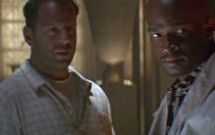 WR: That is something that the English brought over. They were used to foggy, overcast days and darkness. So they found dealing with sunlight strange, they didn’t know how to handle it. That’s why they used fog in buildings to create atmosphere. Then it became a visual element and we’d find ways to create smoke in the frame to add another level of visual interest.
WR: That is something that the English brought over. They were used to foggy, overcast days and darkness. So they found dealing with sunlight strange, they didn’t know how to handle it. That’s why they used fog in buildings to create atmosphere. Then it became a visual element and we’d find ways to create smoke in the frame to add another level of visual interest.
J: How has Tony Scott’s ‘style’ changed over the years?
WR: In his early movies Tony hated moving the camera. He felt that we couldn’t get the lighting as specific if we started dollying and moving the camera around. He would use long lenses so that we could keep the lights very close to the actors. If you watch ‘Top Gun’ and even ‘Days of Thunder’, you may see one or two crane moves but almost no dolly moves. He just refused to do it.
J: Were you involved in filming the race sequences or was this done 2nd unit?
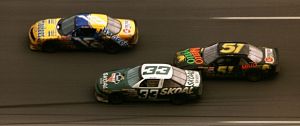 WR:I shot every single frame of it. We filmed nine different races and then we staged about three months worth of racing on our own track. There were twenty to thirty race cars specifically built for our use. Most of the crash scenes were staged at Daytona and Darlington.
WR:I shot every single frame of it. We filmed nine different races and then we staged about three months worth of racing on our own track. There were twenty to thirty race cars specifically built for our use. Most of the crash scenes were staged at Daytona and Darlington.
J: With all the elements and variables this must have been a very difficult experience. Was ‘Days of Thunder’ a tough production?
WR: It was a nightmare. Little did I know, I was young and eager. I wasn’t about to screw-up so I worked my tail off. The shoot lasted for six months. Then we had to go back for pick-up shots at a race track a week before the film was due to be printed for its release. Tony Scott is a perfectionist and he won’t let things go without it being his vision.
J: There are some very iconic images from that film. Tom Cruise pulling up through a cloud of smoke is a lasting image that is used in many career retrospectives. Do you remember filming the sequence?
WR: The reveal on the motorcycle shot was our very first day of shooting in Charlotte, NC. That was a pretty exciting day for me.
J: Throughout your career you’ve lit and photographed some of the most famous faces on the planet. Stars like Tom Cruise, Bruce Willis, Robert Duvall, Kevin Costner, Halle Berry, Eddie Murphy and many more. Is there a level of intimidation when working with these personalities?
WR: By the time I’d become a cameraman, I’d been around for a long time.  Through my experiences working on ‘Top Gun’, ‘Revenge’, ‘Beverly Hills Cop 2’ and ‘The Last Boy Scout’ I’ve met the biggest stars in the world. I met them and I know them. You just try not to be intimated. Then the day comes when you realize, “I know more about what I do, then they know about what they do”. At that point you’re not nearly as impressed by them; they’re just people like everybody else.
Through my experiences working on ‘Top Gun’, ‘Revenge’, ‘Beverly Hills Cop 2’ and ‘The Last Boy Scout’ I’ve met the biggest stars in the world. I met them and I know them. You just try not to be intimated. Then the day comes when you realize, “I know more about what I do, then they know about what they do”. At that point you’re not nearly as impressed by them; they’re just people like everybody else.
J: Have you ever wanted to step up to the Director’s chair?
WR: I directed a few commercials back in the old days. I’m a visual artist and I’ve never felt the need to be in charge of the whole production. I’ve seen how hard and demanding it is. It was not something that I felt like I needed to do.
J: In 1998 you served as Director of Photography on the film ‘X-Files: Fight the Future’. The film was a box-office hit and has spawned a massive following. Can you tell us how you became involved with the franchise?
WR: It was an interesting project. They kept trying to hire me and I asked them “Why don’t you use your guys from T.V.?” They had been burned before on a small film in which they used one of their TV cameramen. Unfortunately the project just ended up looking like another episode of their TV show. Which is also what happened on the second ‘X-Files’ film. They were looking for cameramen that had done big movies and had a lot of experience creating moods. The idea was to bring a big expansive ‘look’ to it. That’s what they hired me to do. They sat me down and said “Do what you do, don’t worry about the budget”. We shot them the movie they wanted and they complained about the budget all the way through. They didn’t quite understand that we couldn’t do a big movie on a TV budget. There was a little bit of shell-shock when they found out what this thing would cost them. We didn’t let it stop us from making the best movie we could.
They were looking for cameramen that had done big movies and had a lot of experience creating moods. The idea was to bring a big expansive ‘look’ to it. That’s what they hired me to do. They sat me down and said “Do what you do, don’t worry about the budget”. We shot them the movie they wanted and they complained about the budget all the way through. They didn’t quite understand that we couldn’t do a big movie on a TV budget. There was a little bit of shell-shock when they found out what this thing would cost them. We didn’t let it stop us from making the best movie we could.
J: What do you look for in a director when collaborating?
WR: I look for one who has an interest in the visual. Some Directors are actor’s directors, they are only interested in dealing with the actors and they say “Do whatever you want”. The cooperation isn’t the same. Whereas a director that has a visual idea in terms of storytelling will give you the opportunity to create and he’ll also back you because he can understand what you’re doing. So I prefer to work with directors that understand my contribution and are interested in a collaborative effort.
J: More recently you’ve been working with still photography. Has this always been a passion of yours?
WR: I’ve always had a camera around and was interested in still photography, but I never took it seriously. Even when I was younger in the Navy I was taking pictures of beer bottles on tables in bars deep in the Orient. I was always doing something creative, not just family snap-shots. So I’ve always had an appreciation for the art of photography. I would go through periods in which I would shoot quite a bit. Then you end up with drawers full of prints, and I could never decide what to do with them. I would go through several years and not touch a still camera. I never really thought of it as a passion until I slowed the film work down. Basically I didn’t want to develop my pictures; I never much cared for a darkroom. It’s smelly, dark and anti-social as far as I am concerned. It wasn’t until digital photography got to the point in which the cameras caught some decent images and the computer could print nice quality. That’s when I thought ‘Hey, this is something that I can work with’. For the last five years I’ve been concentrating exclusively on my still work.
J: Do you enjoy the personal nature of still photography?
WR: After dealing with 300 people every day, the ability to pick up a camera and shoot is a big freedom. The set of photographs that I used for my first show was a challenge. I set out with no crew or lighting equipment and I started to do night photography using just the available light. The first show was ‘Santa-Fe Nights‘. It went over very well; people were not used to seeing their city that way.
J: Do you plan to continue your career in still photography or are you looking to get back into film production?
WR: 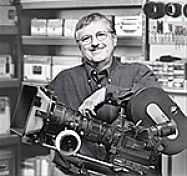 I’m happy doing stills. Filmmaking is a young person’s business. At a certain age the idea of working a 12-14hr. day isn’t appealing. As much as I enjoy shooting I don’t enjoy the politics, the people, or the hours that go with it. I’d love to shoot a movie, but I’d like to do it for eight hours a day. After awhile it gets too trying. It’s interesting Tony Scott’s new film coming out this week is ‘Unstoppable’. A few years back I did a film in Bulgaria with Wesley Snipes called ‘Unstoppable’. That’ll be confusing for a few people.
I’m happy doing stills. Filmmaking is a young person’s business. At a certain age the idea of working a 12-14hr. day isn’t appealing. As much as I enjoy shooting I don’t enjoy the politics, the people, or the hours that go with it. I’d love to shoot a movie, but I’d like to do it for eight hours a day. After awhile it gets too trying. It’s interesting Tony Scott’s new film coming out this week is ‘Unstoppable’. A few years back I did a film in Bulgaria with Wesley Snipes called ‘Unstoppable’. That’ll be confusing for a few people.
J: At one point you were involved in teaching film studies and lecturing. Are you still active in this arena?
WR: I taught one year at the College of Santa Fe and I give lectures and classes at the various schools in the area. I.A.I.A (Instutute of American Indian Arts) has a film program. The state of New Mexico has incentives that bring a lot of productions into town. They offer a film training program. I would go out and give lectures on the relationship between the cameramen, director and various departments. I just mentored a group from the Hispanic Producers Association. For three weeks I was helping as a mentor for the directors and D.P.’s. I still keep my hand in the mix whenever I can.
J: Do you enjoy teaching young people just entering the business?
WR: Its fun, they are full of energy and life and they don’t know anything. It’s amazing, no matter how much they think they know, they don’t really know anything. When I first started I thought I didn’t know enough to teach, and then you realize how little you know when you’re first starting out. Through my years on-set I picked up little things here and there, and it’s amazing to me know how much I’ve learned. If you have a passion keep working. It’s going to take time. Most film students want to be a Director of Photography the day they step out of film school. You should see the look on their faces when I tell them, “It’s probably going to be 20-30yrs before you get a chance to do that”, it’s a reality check. Keep plugging away at it, because it takes time to learn what to do in any and every situation. It can be a very rewarding job; it has treated me well financially. If you want it, go get it, but you must be willing to work hard for low wages in the beginning.

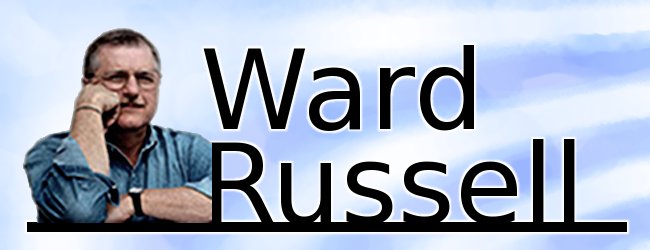
I love this business but the grueling hours are nightmarish.
Ward Russell, Clint Eastwood manages to make films without putting everyone through those long hours. I missed my chance to be on set with him in Flags of our Fathers because I put my children first.